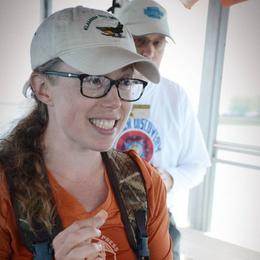Check out these community science opportunities hosted by MI Birds partners across the state:
Audubon’s Christmas Bird Count (multiple dates throughout December): Audubon’s Christmas Bird Count (CBC) is entering its 119th year of existence! Originally created in 1900 by ornithologist Frank Chapman, the CBC replaced an old holiday tradition known as the Christmas ‘Side Hunt’ which was how scientists and hunters would originally census an area, shooting everything in their path! Chapman and others established the CBC in an effort to curb bird population declines. Conservation efforts have grown tremendously since 1900, as has the reach of the CBC! The CBC is primarily conducted by community scientists, like yourself, and data collected has been used by Audubon, the Environmental Protection Agency, American Bird Conservation Initiative, U.S. Fish and Wildlife Service, and others to help identify long-term population trends and movements for hundreds of species across North America.
Visit Audubon’s interactive map to find contact information for the coordinator of a CBC near you!
To participate in a Detroit-area CBC, contact Detroit Audubon’s Research Coordinator, Ava Landgraf: alandgraf@audubon.org
Detroit River Important Bird Area Winter Waterfowl Count (January 26th, February 9th and 23rd): The Detroit River is a globally recognized Important Bird Area, which is known for its outstanding migrant and wintering waterfowl and waterbird concentrations. Early winter surveys have recorded high counts of Canvasbacks (79,300), over 1,900 Tundra Swans, 1,000 American Black Ducks, 10,000 Mallards, 3,500 Common Mergansers, 40 Foresters Terns, and 275 Common Tern nests. Bird Studies Canada began conducting winter waterfowl counts for this Important Bird Area and Detroit Audubon began covering the U.S. side of the River in 2018! Contact Detroit Audubon’s Research Coordinator, Ava Landgraf, for more information on how you can help: alandgraf@detroitaudubon.org
Climate Watch (Jan 15 – Feb 15): This Audubon bird count occurs in the winter and the summer (May 15 - June 15). This bird count provides scientists with data on the current distribution of target species, such as the Eastern Bluebird, White-breasted Nuthatch, and Red-breasted Nuthatch. The data can then be used to validate and refine Audubon’s Climate Watch models that help to predict species range shifts under the effects of climate change. Increasing the model’s accuracy will allow scientists to identify areas of high climatic suitability for target species and to inform on-the-ground land management decisions. Contact one of the following Climate Watch Coordinators in MI to learn how and where you can participate: Becky Kuhn (Grand Rapids Audubon Club): bexrecky@gmail.com, or Brian Merlos (Audubon Great Lakes): bmerlos@audubon.org
MI Birds is a public outreach and education program created by Audubon Great Lakes and Michigan Department of Natural Resources. Birders and hunters share similar conservation values, but rarely cross paths. MI Birds aims to bridge the divide, and deepen all Michiganders engagement in the understanding, care, and stewardship of public lands that are important for birds and local communities.
To learn more about MI Birds or how you can get involved in our partners upcoming community science projects, email us at mibirds@audubon.org.







